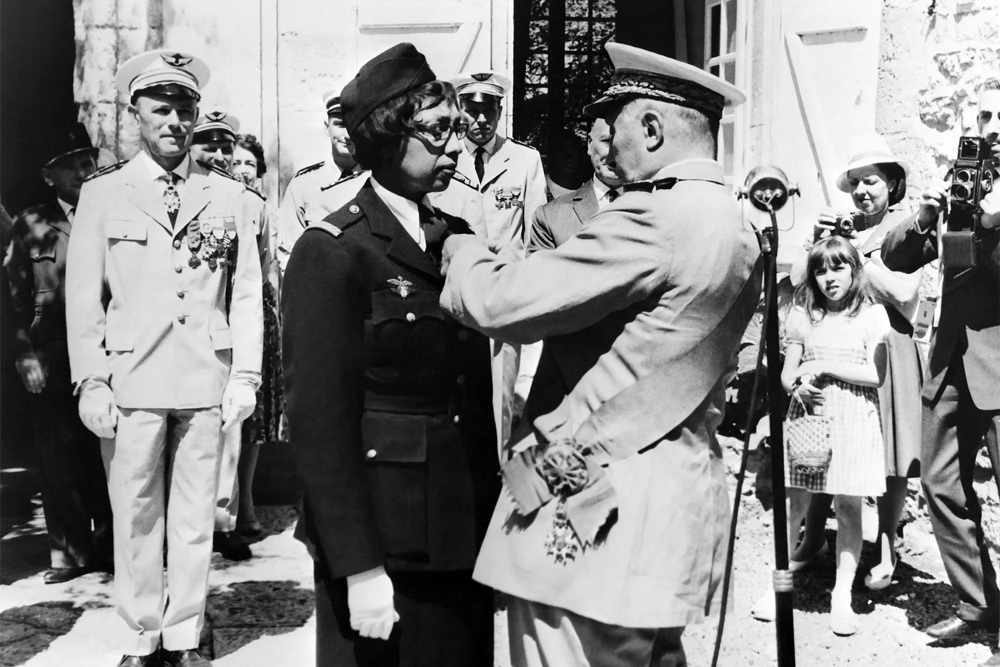Inside Josephine Baker’s badass life as a resistance spy during WWII

The real-life James Bond’s clandestine relationship with celebrity spy Josephine Baker
July 29, 2022
Josephine Baker Was the Star France Wanted—and the Spy It Needed
September 14, 2022French US-born singer and dancer Joséphine Baker traveled the world gathering intelligence for the allies, and once even survived enemy fire in Algeria by diving near a buffet tent.
A s Josephine Baker moved through international checkpoints in Spain and Morocco, the dancer and singer teased the agents who asked to see her papers, saying they just wanted her “autograph.”
Her official story was that she was on a “tour of Spain.” She was really working as a spy for the resistance, with state secrets neatly hidden in her bra.
Baker took a gamble that no one would dare to strip-search her. She smiled her famous smile — she was at the time the most photographed woman in the world — as the documents stayed “snugly in place, secured by a safety pin.”
Baker’s role as one of the true heroes of World War II, fighting against the Nazis at great risk to herself, is detailed in the new book “Agent Josephine: American Beauty, French Hero, British Spy” (PublicAffairs) by Damien Lewis. In 1961, she received a Legion D’Honneur, France’s highest decoration for military service, for her Spain and Morocco mission, and was commended for retrieving “precious information.”

Josephine Baker — shown here receiving the Legion D’Honneur and the Croix de Guerre on August 19, 1961 — would also receive admission into the Pantheon in 2021, one of only five women to earn a place there. (AFP via Getty Images)
Born in St. Louis in 1906, Josephine Baker moved to France at 19. She emigrated with the hope of leaving the racism that hindered her American aspirations behind. She quickly became famous for her singing and dancing, including her beloved act where she wore only a skirt made of rubber bananas. She befriended French luminaries like the writer Colette. She bought a chateau, wore gowns by the most exclusive designers, and often walked the streets with her pet cheetah, Chiquita, who wore a diamond collar.
And for a while she was treated equally.
'Once, when a visiting American seeing her dance at the Folies Bergère theater remarked, “At home a n—-r woman belongs in the kitchen,” the room fell silent in horror. “You are in France,” the manager curtly replied, “and here we treat all races the same.” But dark forces were rising in Europe.
'In 1925, when Hitler’s “brown shirt” storm troopers were still considered a fringe group, Baker performed in Berlin to thunderous applause. When she returned two years later — after Hitler had gained prominence with the publication of his book “Mein Kampf,” which denounced black people as “half-apes” — the response was very different. German and Austrian newspaper headlines denounced her as a “black devil” and a “jezebel.”
“How dare they put our beautiful blonde Lea Seidl with a Negress on stage?” asked one paper, while another claimed “the convulsions of this coloured girl” would undermine Dresden’s sense of dignity. The mobs were such that Baker feared for her life.
Ten years later, Baker’s face adorned the cover of a 1937 brochure denouncing decadent artists issued by Joseph Goebbels, the chief propagandist for the Nazi Party. That same year, Josephine married the Jewish industrialist Jean Lion. Her passion to fight against the Nazis — and to defend her adopted country and husband, as well as herself — grew to a fever pitch. In 1938, she declared that Nazis were criminals and “criminals need to be punished.” She claimed she would kill them with her own hands if necessary.



